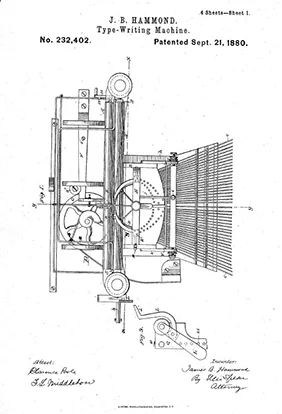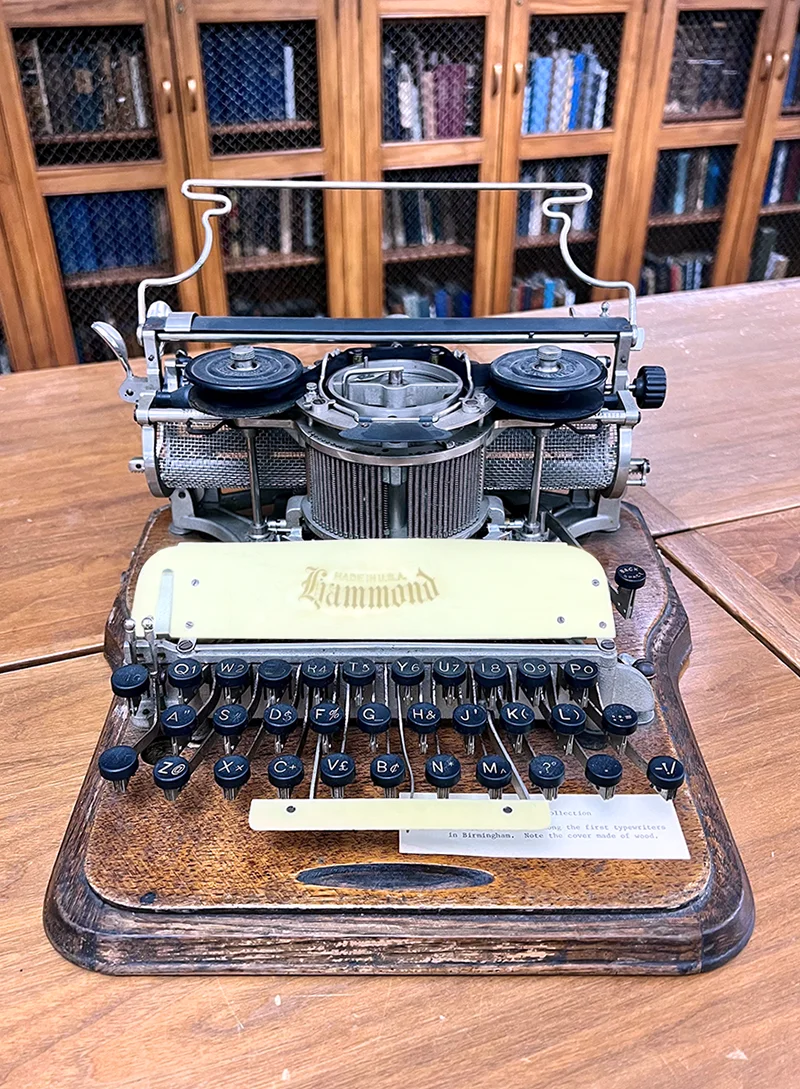 Photo. Hammond no.2 typewriter
Photo. Hammond no.2 typewriter
The typewriter industry evolved during the late 19th century. Competing manufacturers sought to enhance typing efficiency and user experience through various designs and technological innovations. In 1880, J.B. Hammond founded the Hammond Typewriter Company. Hammond unveiled its inaugural model, the Hammond No. 1, by 1884. This groundbreaking typewriter introduced an automatic printing mechanism, ensuring uniform character printing.
Around 1895, the Hammond No. 2 model emerged, distinguishing itself with innovative features. Notably, it offered a choice between two keyboards, one of which we recognize today as the universal keyboard with the QWERTY layout. Originally devised by Sholes and Glidden in 1873 to minimize jamming, the QWERTY design gained popularity and remains the dominant keyboard configuration today.
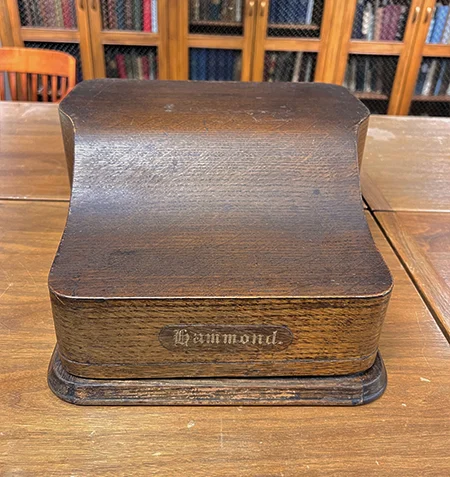 Photo. Hammond wood cover
Photo. Hammond wood cover
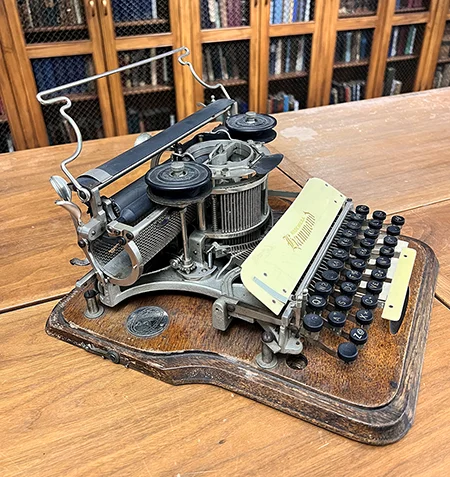 Photo. Side view
Photo. Side view
The Hammond No. 2's distinctiveness extended beyond its keyboard options. Featuring a round type-shuttle working in tandem with keys and a hammer, this model showcased a visible typing point, allowing users to witness the text being printed. Its design addressed a common limitation in earlier typewriters, contributing to enhanced typing speed and accuracy. The typewriter gained acclaim for its ease of use and the production of clear, legible text.
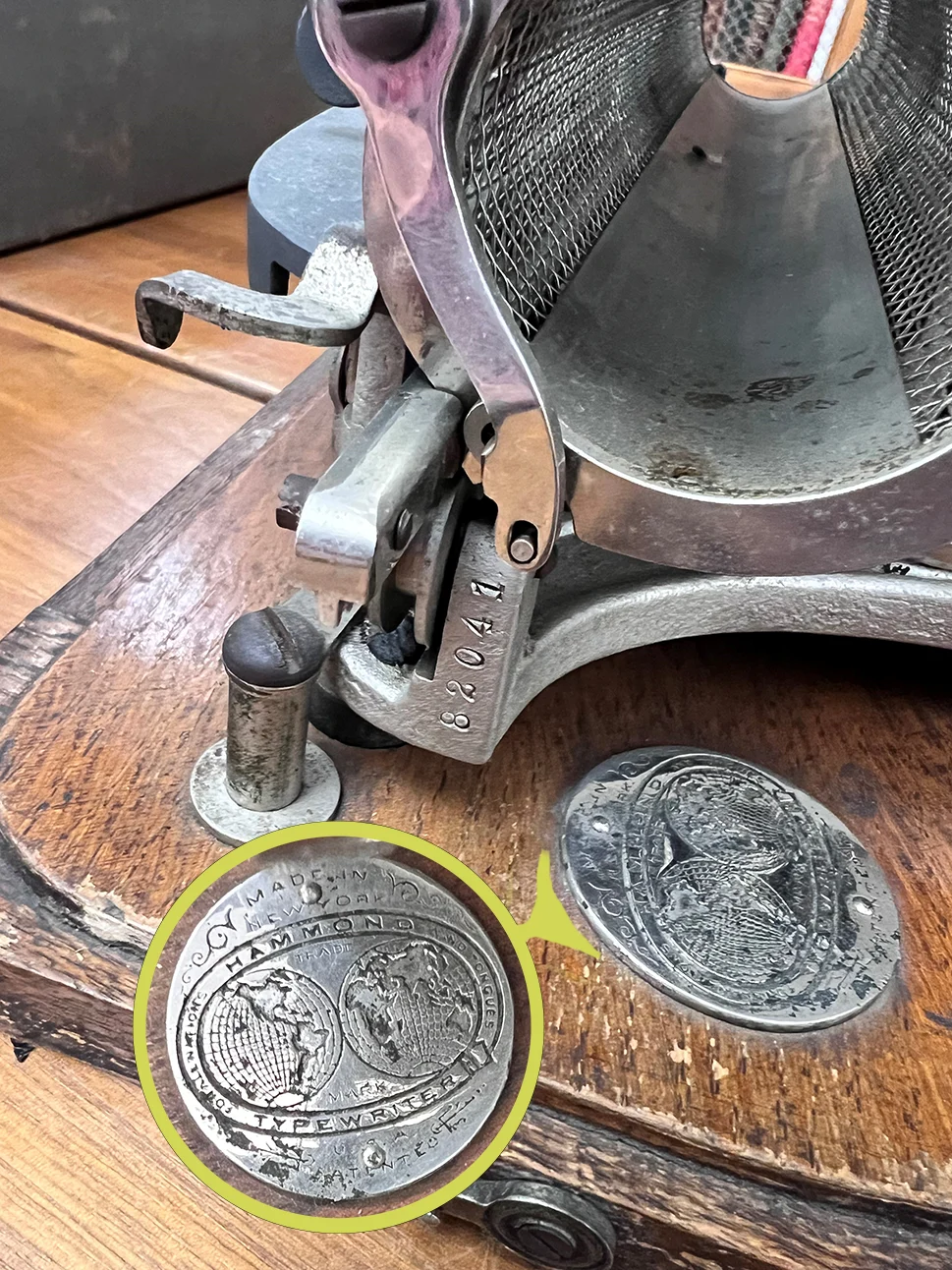 Photo. Closeup of Serial No. and Hammond Trademark
Photo. Closeup of Serial No. and Hammond Trademark
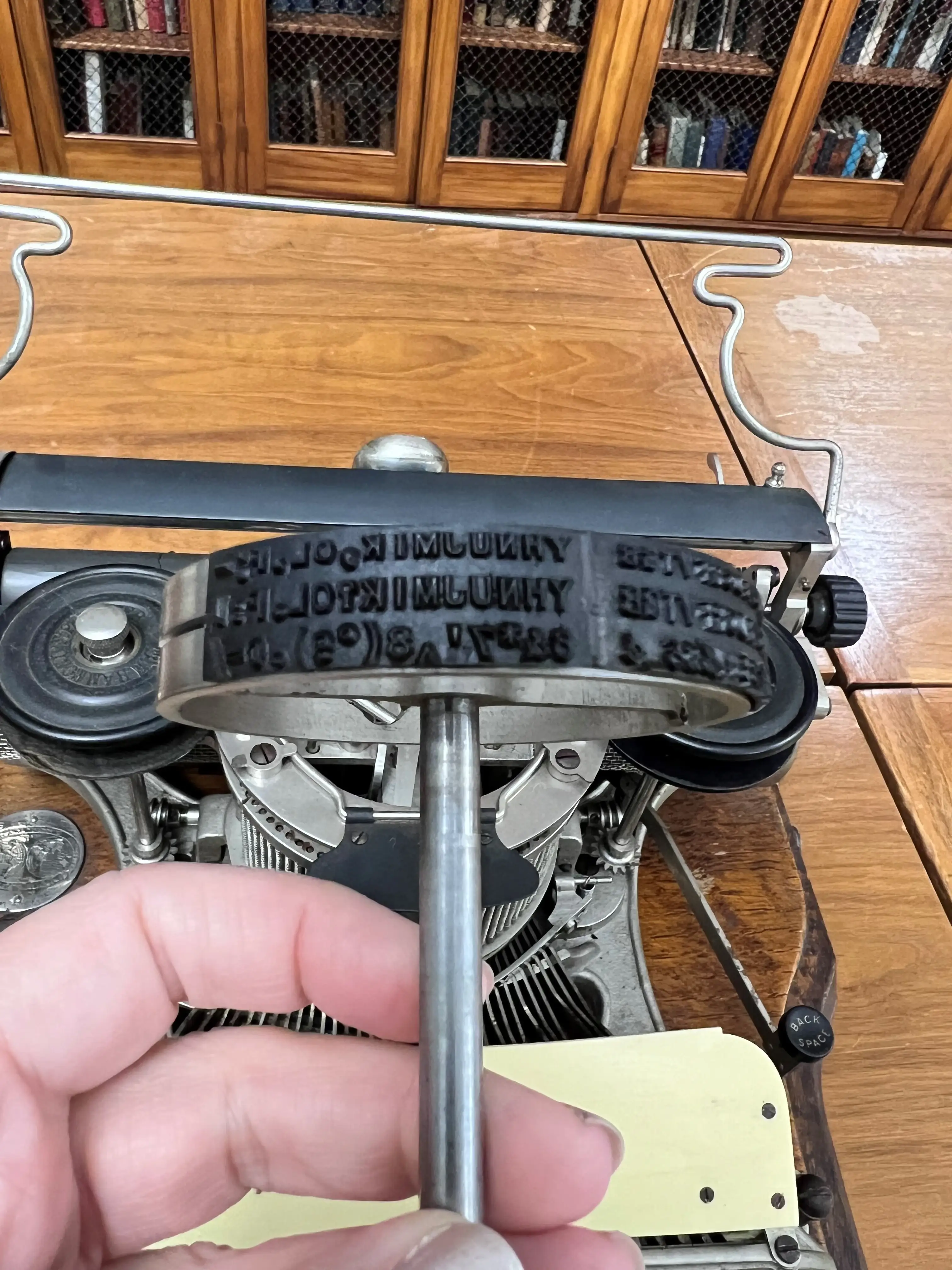 Photo. Closeup of Anvil from Shuttle
Photo. Closeup of Anvil from Shuttle
Throughout its production history, Hammond Typewriters underwent various design alterations, symbolizing the continuous evolution of typewriter technology. These changes encompassed adjustments in keyboard layout, diverse typeface options, and refinements to internal mechanisms, collectively improving the machines' overall functionality and user experience.
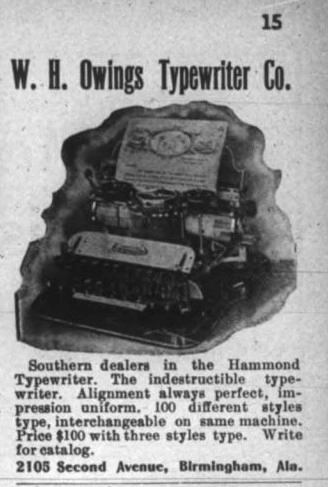 Owings Typewriter Ad, 1903.
Owings Typewriter Ad, 1903.
By 1903, the Hammond No. 2 commanded a price of $100, equivalent to over $3,000 in 2024 terms. This package included a wooden base, a protective wooden cover, and three interchangeable font types. The typewriter currently housed in the Special Collection was donated in 1963 by William H. Brantley, a local historian and attorney associated with Howard College and the Cumberland School of Law Advisory Board. In a note, Mr. Brantley stated that the typewriter was among the first in Birmingham, a city founded in 1871, just 24 years before the Hammond No. 2's production.
The Hammond No. 2 stands as a pivotal figure in typewriter history for its design contributions to functionality, speed, and user experience. Hammond's design revolutionized the typing process, cementing its status as a symbol of technological achievement in the late 19th century.
 Image. J.B. Hammond
Image. J.B. Hammond
Resources
- Hammond, J.B., US-0232402, US Patent and Trademark Office https://ppubs.uspto.gov/dirsearch-public/print/downloadPdf/0232402
- Hammond Multiplex Typewriter, Smithsonian Institute https://americanhistory.si.edu/collections/nmah_850018#:~:text=The%20type%20shuttle%20is%20a,between%20to%20receive%20the%20impression.
- Hammond Typewriter Company https://hammondtypewriter.com/
- Library of Congress. (1910). J.B. Hammond full length portrait, seated on table, facing front; with typewriter [Photograph] Library of Congress Digital Collections. https://www.loc.gov/item/2005686701
- Linoff, Victor, The Typewriter: An Illustrated History, Dover Publications, Inc.200. Internet Archive https://archive.org/details/isbn_9780486412375
- Oden, Charles Vonley, Evolution of the Typewriter, New York 1917. Available from the Library of Congress https://www.loc.gov/item/17027959/
- Typewriter.be https://www.typewriter.be/
- Typewriter Database https://typewriterdatabase.com/hammond.8.typewriter-serial-number-database
- Typewriter Museum https://typewriter.slk.fi/typewriter-collection/hammond/
- W. H. Owings Typewriter Co. Advertisement, The Alabama Baptist, October 7, 1903, Pg. 15


